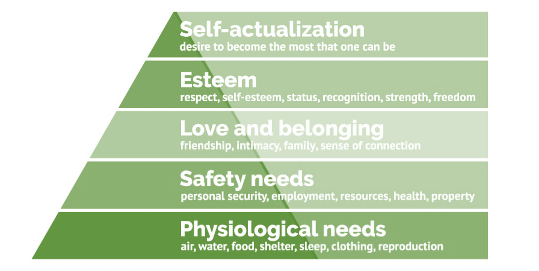2 Leadership Tactics for Motivating Your Team
- Dr. Jeff Doolittle

- Oct 3, 2022
- 5 min read
Updated: Jan 4, 2024

Building a highly-skilled self-directed team and paying them well doesn't guarantee success. Motivation helps to explain the differences between times when employees just show up versus getting things done. Numerous studies suggest that work motivation regulates high-quality performance and creativity. But work motivation is not commonly understood and is a growing source of frustration for leaders in a complex employee-driven talent marketplace. So, if motivation is vital, what can leaders use beyond the traditional carrots and sticks? Here are two leadership tactics that are proven to create optimal work motivation conditions.
Why work motivation matters
Work motivation is a catalyst for business growth and organizational effectiveness. Motivation is what drives people to take action to satisfy a need.
Work motivation is the force within (intrinsic) and beyond (extrinsic) an employee to initiate work-related behaviors. The degree of an employee's motivation influences the intensity and duration of work behaviors.
Researchers over the past couple of decades have identified numerous predictors of work motivation:
Personal factors such as age, educational level, health status, and family support
Emotional intelligence and interpersonal relationship quality
Social situations and interactions
Culture
Psychological needs
Global studies have revealed that increased work motivation leads to:
Improved performance
Increased productivity
Enhanced innovation and creativity
Decreased absenteeism
Decreased employee turnover
Understanding the motives behind work motivation
One of the earliest and most discussed models of motivation is Maslow's hierarchy of needs theory. Maslow suggested that physiological needs motivate employees. The needs for food and water are at the most basic level, and self-actualization is at the highest level.

Another early model from Herzberg suggested that work motivation is mainly influenced by challenge and reward reinforcement.
Motivators increase job satisfaction, such as performance achievement, recognition, job status, and development.
Hygiene Factors decrease job dissatisfaction, such as salary, working conditions, physical workspace, and supervisor quality.
More recent studies have led to the categorization of work motivation into four categories:
Positive-Negative. Positive motives include things perceived as pleasurable. Negative motives are those things perceived as punishment or fear.
Intrinsic-Extrinsic. Intrinsic is doing something because it is inherently interesting or enjoyable, and extrinsic refers to doing something because it leads to a reward.
Cognitive-Affective. Cognitive includes doing something for knowledge and mental or intellectual development, whereas affective is doing something for feelings or emotions.
Economic-Moral. Economic motives are to achieve a goal associated with a basic need or support a desired standard of living. Moral motivation is to do something right or avoid doing something wrong.
Evidence suggests that intrinsic motivation is more effective than extrinsic motivation. In his book Drive, Daniel Pink popularized the Self-determination theory (SDT). This theory suggests that intrinsic work motivation stems from the psychological needs of employees to possess:
Autonomy leads to satisfaction from good performance achieved from personal decisions.
Mastery and competence lead to confidence
Purpose and the care of others and the care for others
Self-determination theory research revealed that autonomy and purpose are significantly linked to higher performance levels. When employees feel they have control over their activities, they are more confident and, in return, more motivated to work. Likewise, when employees feel connected to their team, they are motivated to work harder for the organization. Research into whether mastery positively impacts performance is not as evident.
Here is a short video of Daniel pink speaking on the gap between science and what business frequently does with motivation.
2 Intrinsic work motivation tactics
There is a big difference between making someone do something and work motivation. Here are two practical tactics that are proven to create the optimal conditions necessary for intrinsic work motivation.
Tactic 1: Organizational culture
Organizational culture is more influential than anything else in the organization. It is the one thing that impacts everything. A working definition of organizational culture is the taken-for-granted assumptions and beliefs in a company's norms, actions, and what you can see, hear, and feel.
Numerous studies suggest organizational culture is a crucial factor influencing intrinsic motivation. Why employees work makes a difference in how employees work. Research studies demonstrate that the most motivating workplace cultures:
Maximize the motivation behind the work itself
Enhance the value of the work because of its impact
Increase the potential of work to support employee goals
Minimize emotional pressure to comply
Avoid using negative reinforcement
Don't lead with a "do it because I said so" approach
The Competing Values Framework is a simple approach that a leader can use for assessing and describing an organization's or team's culture to facilitate culture change that makes the group more effective. By simplifying the cultural description to only two fundamental dimensions of either flexibility or stability and internal or external focus, the Competing Values Framework creates a straightforward way for leaders and groups to become aware of and reflect on their current culture. Then, instead of prescribing one ideal culture, the Competing Values Framework enables leaders to take steps toward a preferred culture that aligns with the organization's strategic objectives.

Tactic 2: Servant leadership
How you lead makes a difference. Studies suggest that servant leaders create an increased leader and follower commitment, yielding increased intrinsic motivation that amplifies workforce alignment and business strategy benefits.
Servant leadership is an emerging 21st-century leadership style. The motivations of the servant leader are to serve others first and lead second. This paradigm stands in stark contrast to traditional transactional leadership.
Servant leaders desire to bring out the best in their followers by giving them the best of themself. According to Robert Greenleaf, attributed by many as the founder of servant leadership, the best measure of success for a servant leader is to see those served become healthier, wiser, freer, more self-directed, and ultimately more likely to serve others.
The seven servant leadership virtues that direct the actions of the leader are:
Love
Humility
Altruism
Vision
Trust
Empowerment
Service
Servant leaders practice selfless love. They can apply empathy to be aware of, feel and take on the emotions of what another person is experiencing and demonstrate the compassion to understand and help others. Selfless love is a radically different paradigm from a transactional worldview of the workplace.
The ten characteristics of a servant leader are:
Listening to identify a group's will and help clarify that will.
Empathy to understand and empathize with followers.
Healing self and the relationships with others.
Awareness to understand issues of ethics and values.
Persuasion over positional power.
Conceptualization to see beyond the day-to-day realities of a situation.
Foresight to see around the realities of the present situation.
Stewardship of the greater good for society.
Commitment to growth and development of followers.
Building community among the team and organization.
Have you ever wondered if you are a servant leader? You can take this free Servant Leadership Style Checker to get your Servant Leadership Style Score.
Now, what is the real work motivation challenge for you and your team?
References
Greenleaf, R. K., & Spears, L. C. (2002). Servant-leadership: A journey into the nature of legitimate power and greatness (25th-anniversary ed.). Paulist Press.
Kirkwood, C., Lin, A., Rager, M., Shah-Manek, B., Welch, A., & Williams, N. (2017). Point/Counterpoint: Are outstanding leaders born or made? American Journal of Pharmaceutical Education, 81(3), 58.
McGregor, L., & Doshi, N. (2015). How company culture shapes employee motivation. Harvard Business Review.
Reed, C. (2022). The truth about motivating employees to be more productive. National Business Research Institute.
Spears, L. (2010). Character and servant leadership: Ten characteristics of effective, caring leaders. Journal of Virtues and Leadership. 1(1).
Vo, T., Tuliao, K., & Chen, C. (2022). Work Motivation: The Roles of Individual Needs and Social Conditions. Behavioral sciences (Basel, Switzerland), 12(2), 49.
Walumbwa, F., Hartnell, C., & Oke, A. (2010). Servant-leadership, procedural justice climate, service climate, employee attitudes, and organizational citizenship behavior: A cross-level investigation. Journal of Applied Psychology, 95(3).









Comments